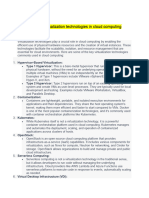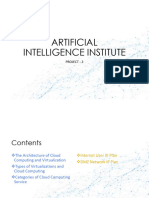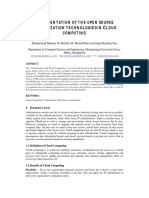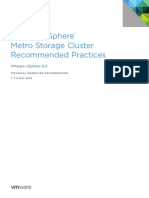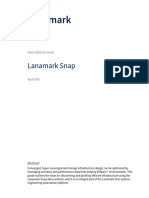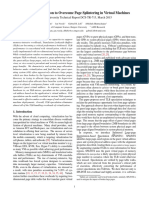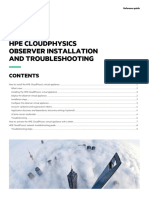0% found this document useful (0 votes)
26 views3 pagesVirtualization in Cloud Computing
This paper discusses the integral role of virtualization in cloud computing, covering its types, architecture, benefits, and challenges. It highlights emerging trends such as containerization and serverless computing, and outlines future research directions to enhance virtualization technologies. The conclusion emphasizes virtualization's importance in enabling scalable and efficient cloud systems.
Uploaded by
expacc007Copyright
© © All Rights Reserved
We take content rights seriously. If you suspect this is your content, claim it here.
Available Formats
Download as DOCX, PDF, TXT or read online on Scribd
0% found this document useful (0 votes)
26 views3 pagesVirtualization in Cloud Computing
This paper discusses the integral role of virtualization in cloud computing, covering its types, architecture, benefits, and challenges. It highlights emerging trends such as containerization and serverless computing, and outlines future research directions to enhance virtualization technologies. The conclusion emphasizes virtualization's importance in enabling scalable and efficient cloud systems.
Uploaded by
expacc007Copyright
© © All Rights Reserved
We take content rights seriously. If you suspect this is your content, claim it here.
Available Formats
Download as DOCX, PDF, TXT or read online on Scribd
/ 3





